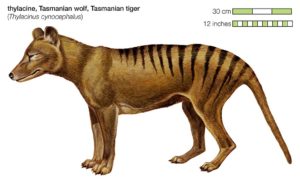-
Animals
- All About Aardvarks – Lesson
- All About Aardvarks – Quiz
- Babirusa – What a Pig! – Lesson
- Babirusa – What a Pig! – Quiz
- The Chimpanzee – The Nearly Human Primate – Lesson
- The Chimpanzee – The Nearly Human Primate – Quiz
- The Donkey – The Intelligent Yet Stubborn Animal – Lesson
- The Donkey – The Intelligent Yet Stubborn Animal – Quiz
- Electric Eels – Shocking Details – Lesson
- Electric Eels – Shocking Details – Quiz
- Ferrets – Playful, Fun-Loving Animals – Lesson
- Ferrets – Playful, Fun-Loving Animals – Quiz
- Giraffe – The Tallest Living Land Animal – Lesson
- Giraffe – The Tallest Living Land Animal – Quiz
- The Hedgehog – Lesson
- The Hedgehog – Quiz
- Iguanas – The “Chickens of the Tree” – Lesson
- Iguanas – The “Chickens of the Tree” – Quiz
- Jaguar – The Largest Cat on the American Continent – Lesson
- Jaguar – The Largest Cat on the American Continent – Quiz
- Koala – Not Koala Bear – Lesson
- Koala – Not Koala Bear – Quiz
- Llamas – The Alpaca’s Kind and Charismatic Cousins – Lesson
- Llamas – The Alpaca’s Kind and Charismatic Cousins – Quiz
- Macaws – The Intelligent, Brightly Colored Birds – Lesson
- Macaws – The Intelligent, Brightly Colored Birds – Quiz
- The Odd-Looking Narwhal – Lesson
- The Odd-Looking Narwhal – Quiz
- Otters – Playful Mammals and Great Swimmers- Lesson
- Otters – Playful Mammals and Great Swimmers – Quiz
- Polar Bears – The Largest Bear of Them All – Lesson
- Polar Bears – The Largest Bear of Them All – Quiz
- Quails – The Nearly Flightless Birds – Lesson
- Quails – The Nearly Flightless Birds – Quiz
- Rattlesnakes – The Venomous Reptiles – Lesson
- Rattlesnakes – The Venomous Reptiles – Quiz
- Sloths – Slow Is the Name of Their Game – Lesson
- Sloths – Slow Is the Name of Their Game – Quiz
- Tasmanian Devils – Catch One in a Looney Tunes Cartoon – Lesson
- Tasmanian Devils – Catch One in a Looney Tunes Cartoon – Quiz
-
Space and Astronomy
- Mars: Just the Beginning? – Lesson
- Mars: Just the Beginning? – Quiz
- Six Billion ‘Earth-like’ Planets in the Milky Way Galaxy? – Lesson
- Six Billion ‘Earth-like’ Planets in the Milky Way Galaxy? – Quiz
- Did NASA Scientists Find Another Universe? – Lesson
- Did NASA Scientists Find Another Universe? – Quiz
- A New Planet Was Discovered – And Old Theories Must Change – Lesson
- A New Planet Was Discovered – And Old Theories Must Change – Quiz
- SpaceX Completes First Civilian Trip to Space – Lesson
- SpaceX Completes First Civilian Trip to Space – Quiz
- First Movie Filmed in Space Successful – Lesson
- First Movie Filmed in Space Successful – Quiz
- James Webb Telescope Heads to Deep Space – Lesson
- James Webb Telescope Heads to Deep Space – Quiz
- A Lot Is Happening on and Around the Moon – Lesson
- A Lot Is Happening on and Around the Moon – Quiz
- First-Ever Picture Taken of the Milky Way’s Black Hole – Lesson
- First-Ever Picture Taken of the Milky Way’s Black Hole – Quiz
- First James Webb Telescope Images Revealed – Lesson
- First James Webb Telescope Images Revealed – Quiz
- Buzz Aldrin Sells Jacket from the Moon Landing – Lesson
- Buzz Aldrin Sells Jacket from the Moon Landing – Quiz
- Humans at Home on the Moon – Could It Really Happen in This Decade? – Lesson
- Humans at Home on the Moon – Could It Really Happen in This Decade? – Quiz
- Winter on Mars – Lesson
- Winter on Mars – Quiz
- Pictures of Mars Show Hidden Figures – Lesson
- Pictures of Mars Show Hidden Figures – Quiz
- Jupiter and Venus Appear to ‘Kiss’ – Lesson
- Jupiter and Venus Appear to ‘Kiss’ – Quiz
- The James Webb Telescope Finds Six Ancient Galaxies – Lesson
- The James Webb Telescope Finds Six Ancient Galaxies – Quiz
- Would an EpiPen Work in Space? – Lesson
- Would an EpiPen Work in Space? – Quiz
- Satellite Spots Earth’s Second Moon? – Lesson
- Satellite Spots Earth’s Second Moon? – Quiz
- Space Mining – The Race is On and China is Leading – Lesson
- Space Mining – The Race is On and China is Leading – Quiz
- How Did Gold and Platinum Arrive on Earth – Lesson
- How Did Gold and Platinum Arrive on Earth – Quiz
- Odysseus Has Found Its New Home – Lesson
- Odysseus Has Found Its New Home – Quiz
- Earth – There’s No Place Like Home – Lesson
- Earth – There’s No Place Like Home – Quiz
- Mars – The Red Planet – Lesson
- Mars – The Red Planet – Quiz
- Of Eras and Ages: Life Begins in the Archean Eon – Lesson
- Of Eras and Ages: Life Begins in the Archean Eon – Quiz
- Venus – A Year in a Day – Lesson
- Venus – A Year in a Day- Quiz
- Mercury – The Speeding Messenger – Lesson
- Mercury – The Speeding Messenger – Quiz
- Of Eras and Ages: Ice, Oxygen, and Animals in the Proterozoic Eon – Lesson
- Of Eras and Ages: Ice, Oxygen, and Animals in the Proterozoic Eon – Quiz
- Jupiter – The Stormy Giant – Lesson
- Jupiter – The Stormy Giant – Quiz
- Saturn – The Great Timekeeper – Lesson
- Saturn – The Great Timekeeper – Quiz
- Of Eras and Ages: Life as We Know It in the Phanerozoic Eon – Lesson
- Of Eras and Ages: Life as We Know It in the Phanerozoic Eon – Quiz
-
The Environment
- Red Tide: No Fun in the Florida Sun – Lesson
- Red Tide: No Fun in the Florida Sun – Quiz
- Leaded Gas Eradicated from the World, Says United Nations – Lesson
- Leaded Gas Eradicated from the World, Says United Nations – Quiz
- COVID Plastic Waste: A Big Problem for Oceans – Lesson
- COVID Plastic Waste: A Big Problem for Oceans – Quiz
-
Archaeology and Paleontology
- Ancient Human Species Discovered – Lesson
- Ancient Human Species Discovered – Quiz
- Biblical City of Sodom Found in the Jordan Valley? – Lesson
- Biblical City of Sodom Found in the Jordan Valley? – Quiz
- Antarctic Explorer’s Ship Found After a Century – Lesson
- Antarctic Explorer’s Ship Found After a Century – Quiz
- Newly Found Diary Shows How Ancient Egyptians Built the Pyramids – Lesson
- Newly Found Diary Shows How Ancient Egyptians Built the Pyramids – Quiz
- Study Shows ‘Apocalyptic Dust’ Might Have Killed the Dinosaurs – Lesson
- Study Shows ‘Apocalyptic Dust’ Might Have Killed the Dinosaurs – Quiz
- Ancient Celestial Calendar Found in a 2,000-Year-Old Tomb – Lesson
- Ancient Celestial Calendar Found in a 2,000-Year-Old Tomb – Quiz
- Hiker Stumbles Upon Ancient Fossils While Hiking in Italy – Lesson
- Hiker Stumbles Upon Ancient Fossils While Hiking in Italy – Quiz
- Of Eras and Ages: Understanding Earth’s Geologic Time Scale – Lesson
- Of Eras and Ages: Understanding Earth’s Geologic Time Scale – Quiz
- Of Eras and Ages: Earth’s Chaotic Beginning in the Hadean Eon – Lesson
- Of Eras and Ages: Earth’s Chaotic Beginning in the Hadean Eon – Quiz
-
Technology
- 3 Reasons to Protect Your Online Privacy – Lesson – VIDEO
- The Rise of Deepfakes – Lesson
- The Rise of Deepfakes – Quiz
- A New Mayflower Voyage, Captained by AI Technology – Lesson
- A New Mayflower Voyage, Captained by AI Technology – Quiz
- The Latest Supercomputer Is Breaking Speed Barriers – Lesson
- The Latest Supercomputer Is Breaking Speed Barriers – Quiz
- LNGenZ Survey: What is the Greatest American Invention? – Lesson
- LNGenZ Survey: What is the Greatest American Invention? – Quiz
- School and ChatGPT – Is it Cheating? – Lesson
- School and ChatGPT – Is it Cheating? – Quiz
- Artificial Intelligence Gets an Upgrade? – Lesson
- Artificial Intelligence Gets an Upgrade? – Quiz
- Scientists Plan to Bring the Dodo Bird Back from Extinction – Lesson
- Scientists Plan to Bring the Dodo Bird Back from Extinction – Quiz
- Is There Too Much Technology in Education? – Lesson
- Is There Too Much Technology in Education? – Quiz
- AI Coming to a Keyboard Near You – Lesson
- AI Coming to a Keyboard Near You – Quiz
- Is the NSA Browsing Your Browser History? – Lesson
- Is the NSA Browsing Your Browser History? – Quiz
- AI Can’t Compete With People Skills – Lesson
- AI Can’t Compete With People Skills – Quiz
- How Social Media Is Hazardous to Generation Z – and Beyond – Lesson
- How Social Media Is Hazardous to Generation Z – and Beyond – Quiz
- Surgeon General’s Warning for Social Media – Lesson
- Surgeon General’s Warning for Social Media – Quiz
- Pay With Your Face: Is the End of Cash Nigh? – Lesson
- Pay With Your Face: Is the End of Cash Nigh? – Quiz
- Can Artificial Intelligence Really End Cancer? – Lesson
- Can Artificial Intelligence Really End Cancer? – Quiz
-
Mind and Body
- Teen Scientist’s Invention Mixes Music with Mental Health – Lesson
- Teen Scientist’s Invention Mixes Music with Mental Health – Quiz
- Man Receives First Pig Heart Transplant – Lesson
- Man Receives First Pig Heart Transplant – Quiz
- Sniffing Out the Truth About Smells – Lesson
- Sniffing Out the Truth About Smells – Quiz
- The Power of Playtime – Lesson
- The Power of Playtime – Quiz
- Is Language Getting More Emotional? – Lesson
- Is Language Getting More Emotional? – Quiz
- Scientists Say Household Chores Help Kids’ Brains – Lesson
- Scientists Say Household Chores Help Kids’ Brains – Quiz
- Transplant of Pig Kidney Into a Human Successful So Far – Lesson
- Transplant of Pig Kidney Into a Human Successful So Far – Quiz
- The Lack of a College Degree Is Shortening Lifespans – Lesson
- The Lack of a College Degree Is Shortening Lifespans – Quiz
-
Flora and Fauna
- Dogs Can Tell When Humans Make a Mistake, Says Study – Lesson
- Dogs Can Tell When Humans Make a Mistake, Says Study – Quiz
- Jonathan: The World’s Oldest Living Tortoise – Lesson
- Jonathan: The World’s Oldest Living Tortoise – Quiz
- The Monarch Butterfly Makes a Surprise Return – Lesson
- The Monarch Butterfly Makes a Surprise Return – Quiz
- Bat Falcon Spotted in the United States for the First Time – Lesson
- Bat Falcon Spotted in United States for the First Time – Quiz
- Charles Darwin’s Notebooks Mysteriously Returned after 20 Years – Lesson
- Charles Darwin’s Notebooks Mysteriously Returned after 20 Years – Quiz
- Six Endangered Red Wolf Pups Born in Wildlife Refuge – Lesson
- Six Endangered Red Wolf Pups Born in Wildlife Refuge – Quiz
- Scientists Record Never-Before-Heard Whale Call – Lesson
- Scientists Record Never-Before Heard Whale Call – Quiz
- Underwater Meadow Gets Credit as the World’s Largest Living Plant – Lesson
- Underwater Meadow Gets Credit as the World’s Largest Living Plant – Quiz
- Scientists Trying to Bring the Tasmanian Tiger Back from Extinction – Lesson
- Scientists Trying to Bring the Tasmanian Tiger Back from Extinction – Quiz
- Jurassic Era Insect Found at Arizona Walmart – Lesson
- Jurassic Era Insect Found at Arizona Walmart – Quiz
- The Comeback of the Nearly Extinct Earless Lizard – Lesson
- The Comeback of the Nearly Extinct Earless Lizard – Quiz
- A Strange Golden Orb Found on the Ocean Floor Is Alive! – Lesson
- A Strange Golden Orb Found on the Ocean Floor Is Alive! – Quiz
- Peanut: The Pet Chicken With a World Record – Lesson
- Peanut: The Pet Chicken With a World Record – Quiz
-
Mathematics
- Metric vs. Imperial: A Weighty Debate in Britain – Lesson
- Metric vs. Imperial: A Weighty Debate in Britain – Quiz
- The Abacus is Helping Kids Master Math Skills – Lesson
- The Abacus is Helping Kids Master Math Skills – Quiz
- Retired Engineer Discovers ‘Einstein’ Shape – Lesson
- Retired Engineer Discovers ‘Einstein’ Shape – Quiz
Scientists Trying to Bring the Tasmanian Tiger Back from Extinction – Lesson

(Photo by Dave WATTS/JACANA/Gamma-Rapho via Getty Images)
It’s not Jurassic Park, but the idea of bringing back an extinct animal is similar.
Scientists want to bring back the Tasmanian tiger, or thylacine, which has been extinct since 1936. While the name of the animal might make you think of a cross between a tiger and the Tasmanian Devil from the Looney Tunes cartoons, it is actually a marsupial, meaning it carries its young in a pouch like kangaroos.
De-Extinction of the Tasmanian Tiger
Not too different from the techniques used in the Jurassic Park movies, one science company is studying degraded genes from the thylacine to see if it can bring the species back to life.
Colossal Biosciences thinks it can recreate the Tasmanian tiger with stem cells and gene-editing technology. The company suggests it could succeed within ten years by using CRISPR, a gene-editing tool. The researchers are also studying the DNA of one of the thylacine’s closest extant relatives, the fat-tailed dunnart, a mouse-sized marsupial.

(Photo by Wolfgang Kumm/picture alliance via Getty Images)
Andrew Pask, an evolutionary biology professor at the University of Melbourne in Australia, has partnered with Colossal Biosciences. He said the idea is not just an experiment but is for the long term. “To bring a healthy population of thylacines back, you can’t bring back one or five,” he told CNET. “You’re looking at bringing back a good number of animals that you can put back into the environment.”
This isn’t a new idea. In 1999, the Australian Museum considered a project that would clone the Tasmanian tiger, and other attempts have been made to get DNA samples from the extinct animal.

Besides the thylacine, Colossal Biosciences wants to bring back the woolly mammoth by 2027. It plans to mix genes from the mammoth with those of the Asian elephant, which is the mammoth’s closest living relative. The creatures wouldn’t exactly be like the woolly mammoths of old, though. Ben Lamm, co-founder of Colossal, said it would be more like an “Arctic elephant,” with shaggy hair, curved tusks, small ears, and a domed forehead.
Is It Possible – or Ethical?
Not everyone thinks this is a good idea. While we’re not talking about the T-Rex from Jurassic Park, the idea can be a bit scary. Associate Professor Jeremy Austin from the Australian Centre for Ancient DNA doesn’t believe it’s really possible. He said, “De-extinction is a fairytale science” and that this project is “more about media attention for the scientists and less about doing serious science.”

(Photo By Encyclopaedia Britannica/UIG Via Getty Images)
In the science community, de-extinction is controversial. It raises several concerns, such as what happens to the Tasmanian tiger if it is brought back and ends up becoming extinct again. What impact will reintroducing the creature into the wild have on the ecosystem, including plants, other animals, and people after nearly 100 years? Some scientists also worry that if the idea catches on and more species are brought back, there might not be enough resources to protect the animals we still have.
The Tasmanian Tiger
What was the Tasmanian tiger, and what happened to it?
The animal earned its nickname because of the stripes on its back, which made it look a bit like a tiger. In fact, it was a much smaller cross between a canine and a marsupial. The thylacine died out due to human hunting and competition from dingoes – a type of wild dog.

In the 1800s and early 1900s, European settlers in Tasmania blamed the thylacines for killing their sheep and chickens, and sought to get rid of them as pests. The species was hunted to near extinction. At the time, the Tasmanian tiger was the top predator in its area. Some researchers suggest that bringing it back could help to restore balance in the rainforests because it would hunt sick or weak animals, which might help to control the overpopulation of wallabies and kangaroos.
What do you think – is it possible to bring extinct species back to life? If so, is it something we should actually try?